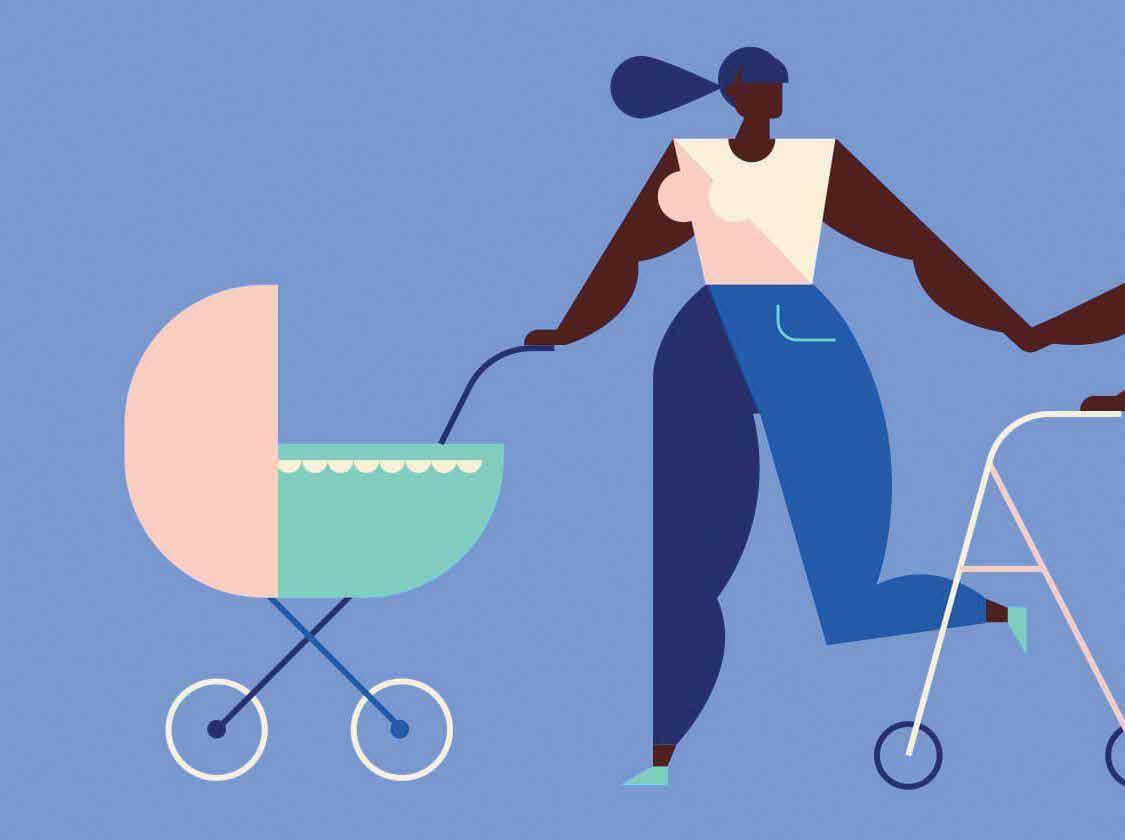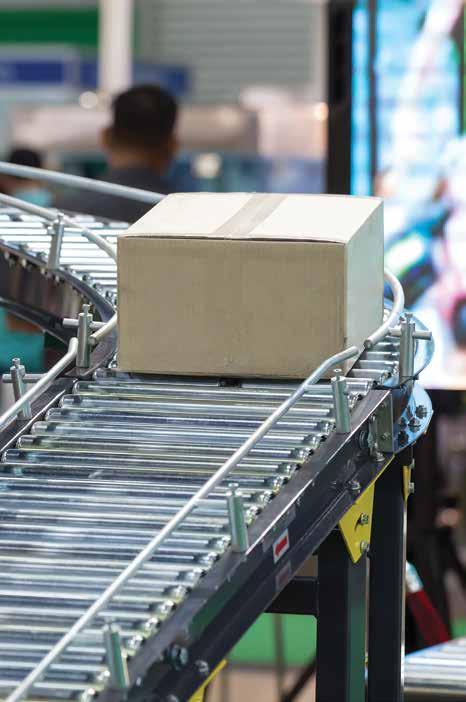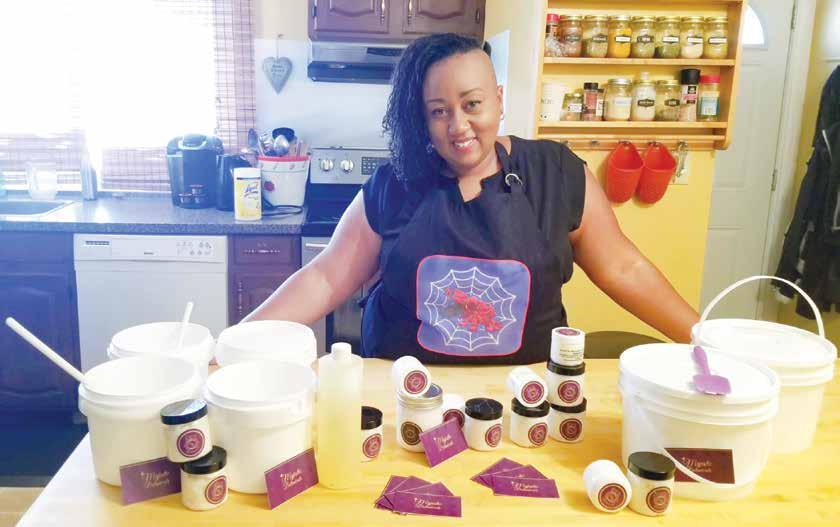
12 minute read
The Misinformation Crisis
Don’t Pass It On
How to stop the harm of misinformation from spreading
Advertisement
We’ve all probably seen something online, in print, or on television that didn’t seem quite right, or it seemed to go against all the evidence and accepted science at hand. Sometimes it’s simply a mistake or error, but other times – and increasingly so in today’s virtual world – it’s much worse: it’s misinformation.
To learn more about misinformation and its effect, Prairie Manufacturer’s editor, Jeff Baker, spoke with Timothy Caulfield, a Canada Research Chair in Health Law and Policy, a Professor in the Faculty of Law and the School of Public Health, and Research Director of the Health Law Institute at the University of Alberta. In addition to publishing more than 350 academic articles and winning numerous academic and writing awards, Timothy is also host and co-producer of Netflix’s A User’s Guide to Cheating Death and author of Is Gwyneth Paltrow Wrong About Everything?: When Celebrity Culture and Science Clash.
Jeff Baker: What is misinformation and what can it look like?
Timothy Caulfield: Misinformation is really the umbrella term that captures a broader phenomenon that includes everything from disinformation (intentionally pushing
things that you know are not true) to conspiracy theories, to inadvertently embracing and spreading untruths. The term captures this broader cultural phenomenon that has really become an incredible challenge for all of us.
JB: How did we get to this point? Is it really as bad as it seems?
TC: It really is bad. I can't keep up with all the misinformation that is blowing from every corner of pop culture right now. I've been studying misinformation for decades and I've never seen anything like it. It really has accelerated.
Donald Trump obviously is part of the story, but then we had the acceleration in misinformation around things like climate change, GMOs, and vaccination. Now we're in the ‘infodemic’ era where we have all this misinformation about the pandemic, and what’s interesting is people are taking greater notice of the problem of misinformation.
Groups like the United Nations, the World Health Organization, research institutions, and governments are all taking note of the harm that misinformation can do.
JB: Speaking of harm, what harm can come from sharing this type of content with our circles, regardless of how big they are?
TC: Some people recognize the existence of misinformation, but they might not think about the harm. And the harm is real. There’s physical harm, where people have died as a result of misinformation or acting on misinformation. People have also been injured and even poisoned. Misinformation has increased stigma and discrimination in the world.
It also has an adverse impact on health and science policy, and the hydroxychloroquine debacle is a good example of that.
It just adds to the chaotic information environment, and I think that’s often overlooked. It creates more noise and makes it more difficult for people to tease out what's real from what's not real. It makes it more difficult to make informed decisions about how to live a healthy lifestyle.
It’s also more difficult even for clinicians and policymakers to make decisions and have the public act on those decisions.
JB: What can individuals do to combat the misinformation that they encounter?
TC: Individuals just need to do their best not to pass on misinformation.
Yes, there are entities out there - the super-spreaders, like some celebrities, politicians, and other prominent individuals and entities - that spread misinformation, but much of the spread is by individuals on social media. Whether you're talking about Facebook, Twitter, Instagram, or TikTok, it's spread on there.
One of my colleagues, Dr. Gordon Pennycook at the University of Regina, is doing research that's finding that Canadians want to be accurate; they don't have some nefarious goal. If you can invite people to pause and just think [about accuracy] before they share, we can all have a tangible impact on the spread of misinformation.
We've partnered with Media Smarts on a public health campaign that encouraged people to do exactly that: Check First. Share After. It sounds ridiculously simple but there's evidence to back it up.
Another thing people can do is use good, trustworthy sources of science in order to counter misinformation they see. They can also report misinformation to regulators. If it's a health product or a health care provider, there are regulatory bodies that people can turn to, and I encourage people to do that.
JB: Can we actually solve this issue, given it seems to be a game of whack-a-mole?
TC: I like to be optimistic that we can do something about this.
The good news is so many people are taking this very seriously. We have more research on misinformation, more tools at our disposal to fight misinformation, and regulators seem to be taking it more seriously, too.
It’s going to be tough, though, because there are so many sources of misinformation, and it’s spreading so fast. I think our strongest tool is empowering individual Canadians to try to fight misinformation, and the best way they can do that is to not spread it themselves.

Manufacturing Safely with COVID-19
Helpful tips to keep your people and plant safe

By Nathan Rasmussen
During the initial phase of the pandemic, we have learned some hard lessons about this virus. The most important component in the fight against the spread of SARS-CoV-2 comes down to two words that are often not clear in their intent: Physical Distancing.
Since we know the virus is primarily transmitted through respiratory droplets, this needs to be the focus of our prevention efforts. It can also be picked up through indirect transfer on contaminated surfaces, but the main route of transmission is close contact and ‘breathing on each other.’
Coughing, laughing, sneezing, singing, talking, and breathing are all activities that when performed within two metres of another person carry increased risk of transmitting the virus. To protect our people
and operations, we as manufacturers need to identify where in our processes the physical distancing breaks down, and either reduce the exposure or mitigate the impact.
The Impacts of a Positive Test
When a person tests positive for COVID-19 the local health authorities will begin contact tracing for the infected person. This process identifies the individuals that the infected person had close contact with during the period of time when they were infectious. Each of those individuals would then be required to self-isolate for 14 days or until at least 24 hours after their last symptoms are gone.
How many people are we in contact with each day? In two days? Or three days? It’s possible to be contagious for three days before showing symptoms, when pre-symptomatic, or perhaps the ill worker won’t show any symptoms at all. Consider how many others those folks could come into contact with. In very short order we can go from one positive test result to dozens of employees under isolation orders.
Since contract tracing and isolation is unavoidable after a positive test, we need to focus on changing how that process impacts our business.
If you only do three things, do these
First, we need to make every effort to keep ill and symptomatic people out of our buildings. This needs a layered approach which would include a policy requiring ‘…sick people stay home…’ (both employees and visitors), signs, emails, and multiple other types of communication for both employees and visitors explaining the new expectations and what to do when they do get sick instead of coming to your building. Creating a culture where it’s not only acceptable, but expected, that workers stay home when sick will be a challenge, but with consistency and transparency it is possible.
Creating a culture where it’s not only acceptable, but expected, that workers stay home when sick will be a challenge, but with consistency and transparency it is possible.
Second, look for opportunities to eliminate instances of your team being within that two-metre bubble. If they absolutely have to be inside that bubble, can a physical barrier be installed in between them?
The options for physical barriers run from fancy plexiglass sheets to simply mounting two posts and wrapping clingwrap around to create an inexpensive (though perhaps not stylish) separation between workers and workstations. Any solid object will reduce the amount of virus an individual is exposed to. If a barrier won’t work for the operation, then requiring face coverings or masks be worn and limiting the amount of time that close contact occurs would be the last resort. Pay special attention to the workers who move from department to department (e.g. supervisors, maintenance staff, etc.).
Third, your COVID-19 preparedness program should include as much cross training as you can accomplish. Develop a training matrix; identify your mission critical jobs and how many operators you have qualified to perform each; and then determine how many operators you want trained as back-up.
Canadian manufacturers have done amazing work reacting to this pandemic. Taking that agility and applying it to planning for the upcoming respiratory illness season during the realities of the pandemic will be important to maintain the momentum the sector has made over the last quarter.
Nathan Rasmussen is an Advisor with Made Safe. He's part of a team that provides Manitoba manufacturers with a comprehensive suite of training and practical solutions for real world safety challenges. Visit www.madesafe.ca to learn more.
Employees don’t have the right to come to work impaired.

The SafeCare Canada Workplace Screening for Impairment Program™ is a toolkit to support an employer’s existing hazard prevention policy. Kits can include: • 12-panel multi-drug urine screening cups • Single-panel urine screening strips • Handheld digital 7-panel multi-drug saliva analyzer
SafeCare Canada products are 510K, CE and ISO 13485 certified, and provide 99% accurate results in under three minutes. Reduce employer liability and increase employee accountability for impairment-related risks.
Where to focus your manufacturing company: 5 considerations to build a post-COVID-19 growth strategy
As we start passing through the recovery stage of the COVID-19 pandemic and start thinking about growth strategies for the manufacturing and distribution sector, a few areas immediately surface as top-of-mind focus. Being an industry that was hit especially hard by market disruptions, manufacturers have been rethinking a number of considerations: What needs to change in order to survive? What does success look like? Where do shifts need to be made in order to stay competitive? Supply chain disruptions and increasing costs are eroding competitiveness. Those that build and execute a plan to address these issues will be able to maintain and increase market share without sacrificing margin. The BDO manufacturing team has identified five areas of focus to start building a growth strategy for your manufacturing business in order to capitalize on opportunities.
1. Supply chain disruptions
Traditional supply chains—both direct material supply and product sales—have been disrupted by the pandemic. And they’ll continue to be disrupted for some time. Moreover, costs have increased. To remain competitive, businesses need to find new supply channels while minimizing these additional cost increases. To combat the disrupted sales channels, manufacturers must either find new sources of revenue or expand on existing ones. This might mean new geographies, new products, or new channel partnerships. How can you get started with incorporating this into your growth strategy? Build and execute a plan to review and adjust material supply sources to improve resilience, manage costs, and adjust inventory-carrying policies. Further, you should review go-to-market options, think about diversifying your product portfolio, and prepare to expand into new sales channels.
2. Margin erosion
Another consideration is reduced margins for the foreseeable future. This is simply a reality that needs to be dealt with as we recover and revive business back to its usual pace. You want your manufacturing business to remain competitive, maintain or increase market share, and improve margins. That’s why your growth strategy must address the fact that direct material costs have increased while some costs have remained fixed. On top of that, in most cases revenues have declined along with productivity. In order to start developing a plan, you need to incorporate reductions in direct material costs and fixed costs, while increasing revenue and productivity. This might include automating production lines, retooling parts of the company, and retraining staff accordingly. If it’s a possibility, completely pivoting what’s being produced may be a solution. We’ve seen a number of manufacturers do this successfully. Staying on top of financial forecasting to respond to the current and future landscape is imperative in managing costs and cash flow. BDO teams across Canada specialize in this type of future-proofing for a number of scenarios you might encounter.
3. Workforce management
It’s vital to protect an organization’s workforce in order to maintain productivity and plan for the future. This is especially true of the manufacturing and distribution sector, as so much of it is reliant on skilled labour. Unprecedented challenges have strained the HR capabilities of many manufacturing businesses. Many have had to lay off staff as production lines were halted. Or they were faced with a labour shortage caused by the closing of borders keeping foreign workers from being able to do their jobs. What might the next steps towards a solution be? We recommend consulting our HR advisory team about options surrounding return-to-work programs, HR policy updates, leadership and management support, and a staff communications strategy.
4. Business continuity planning
It’s important for an organization to have a robust business continuity plan to minimize risk of disruptions as conditions change. Most manufacturing businesses don’t have a plan like this in place, making them that much more susceptible to changes in the market. As conditions in the manufacturing landscape change, your business needs to be ready to change with them—coming out stronger every time. As part of your growth strategy, we advise building, testing, and deploying a business continuity plan to minimize business disruptions as conditions change. This would include preserving business continuity, managing cash flow, rethinking budgets, maintaining important vendor and stakeholder relationships, and leveraging technology to help keep your various platforms running. It’s never been so important to plan for the future with resiliency being top of mind.
5. Cash flow and working capital management
The ability to dynamically re-forecast as conditions change allows businesses to maximize their use of working capital and avoid cash flow stress. Traditional budgeting and cash flow planning processes don’t allow for frequent re-planning, making you more vulnerable as conditions keep evolving.
Budgeting and cash flow planning processes should enable re-planning as needed. You should be able to pivot business at any given point and react quickly to change. Every business will suffer losses one way or another, in line with the economic downturn. That stresses the importance of managing liquidity and cash flow now—taking uncertainties into account for future planning.
Mike Gillespie, David Linton, and Harry Lake are partners with BDO Canada and have extensive experience working with clients in the manufacturing and distribution sector. They understand the challenges manufacturers are facing in the wake of COVID-19 and can help you build and execute growth plans to emerge from the disruption stronger and better positioned for future change. Contact them for more information.




